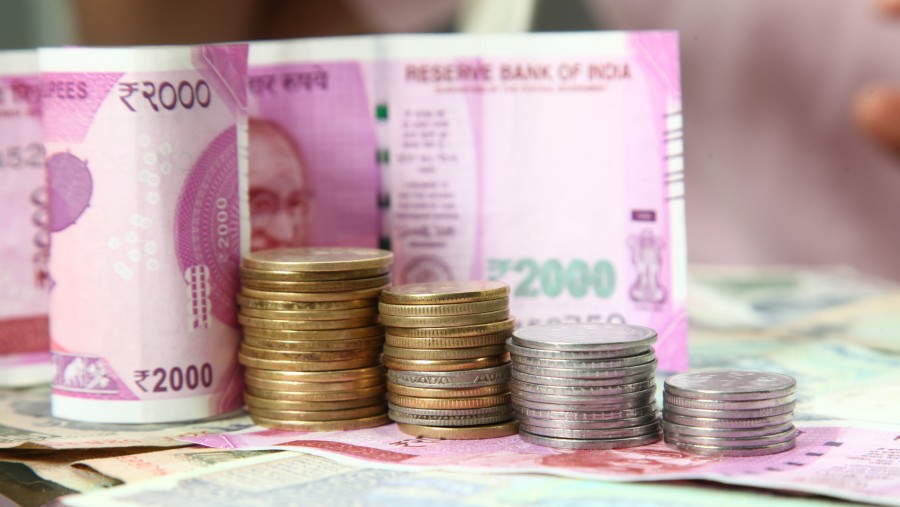A liquidity ghost for Sensex wrapped in bubbles
[ad_1]
The Reserve Bank of India is expected to soon start debating when to tighten its liquidity taps that have released a torrent of money into the financial system since the central bank opted for accommodative monetary policy in June 2019.
It was on June 6, 2019 that RBI policymakers unanimously decided to change the stance of monetary policy from neutral to accommodative to address several key concerns: a significant weakening of growth impulses that has subsided. reflected by a widening of the output gap; a sharp slowdown in investment activity; and a sharp moderation in the growth of private consumption.
Does this sound familiar to you?
In a post-pandemic world, all of these worries have surfaced again. The difference, of course, was in the money that flowed through the tubes of the financial system.
By June 2019, the average daily excess liquidity in the system had risen to a modest Rs 66,000 crore. The surplus has since swelled and the RBI was forced to absorb as much as Rs 8.4 lakh crore on September 9 through its liquidity soak operations.
The concern is that instead, this liquidity has not jostled private investment or consumption – which was the apparent reason for adopting the easy money policy in the first place.
It is suspected that some of it has seeped into the capital markets, fueling the asset bubble in the equity markets, which has pushed the Sensex above the 60,000 point threshold.
Any move to turn off the taps now will scare the markets where a mad bull run has fueled euphoria among investors and sparked a mad race for breathtaking returns.
In its 2020-2021 annual report, the central bank, which worried about the formation of a “bubble” in the stock markets, said that the liquidity injected to support the economic recovery could have unintended consequences in the form of inflation of the stocks. asset prices.
Such support cannot be expected to be indefinite and a calibrated unwinding may be needed once the real economy is on the road to recovery, according to the annual report.
Speaking to the Telegraph, Suvodeep Rakshit, senior economist at Kotak Institutional Equities, said any unwinding of the excess liquidity in the banking system will depend on how comfortable the RBI is with growth and the possibility it considers. inflationary risks on the horizon.
He noted, however, that the worst has passed for the economy and that the recovery phase has begun.
“As a medium-term policy, the RBI should wire up a plan and highlight the markers of an environment conducive to draining cash. In terms of liquidating excess cash, the RBI has a variety of tools to work with. The task becomes difficult and must be gradual because the system is used to this type of liquidity. This is also what we are seeing globally, ” Rakshit said.
He said the course that will be taken must be well communicated by the RBI and that such a course should not be a hard landing.
“Now is the right time to start communicating, whether now or in the next October policy… the RBI should point the way it intends to take,†he said.
A senior analyst from a national brokerage firm who agrees with Rakshit said stock markets at record highs will not be the main factor in absorbing excess liquidity and the central bank will be guided by the growth momentum- inflation.
However, experts such as Arun Kejriwal, director of KRIS, an investment research firm, have indicated that the current rally may not be a bubble.
“The main factors driving stocks higher are a high participation of foreign portfolio investors and an increase in the participation of domestic investors, in particular of the retail lots … thus the investor base in India has grown considerably,” did he declare.
Kejriwal said the number of mat accounts opened in 2021-2022 increased to 26 lakh per month, from 12 lakh in the previous fiscal year.
“There is always an element of fear when benchmarks are in uncharted territory… Yes, current markets will correct and we could see the Sensex go down, but a drop to 50,000 levels seems unlikely unless there is no real bad news. ”
The six-member panel of the RBI’s monetary policy committee is due to meet next month as the U.S. Federal Reserve has announced that it will cut monthly bond purchases by $ 80 billion from November and has indicated that it could raise interest rates sooner than expected.
“Market participants should be wary of rising inflation and the resulting withdrawal of liquidity from the system. In 2021, some central banks – Russia, Korea and Ukraine – raised their rates. The increased risk of inflation and therefore the withdrawal of an ultra-accommodative monetary policy by global central banks can trigger a sharp rise in bond yields which can lead to a sharp correction in risky assets, ” said Piyush Garg CIO -ICICI Securities Ltd.
Garg said that while domestic investors should watch for developments in global yields, it can cause stock prices to fall sharply by 10-15% from current levels.
[ad_2]

